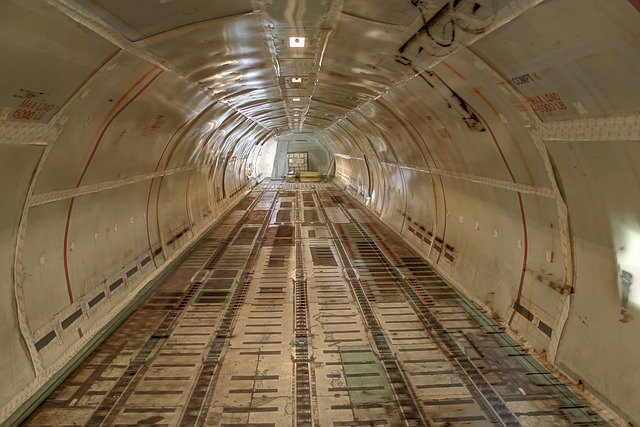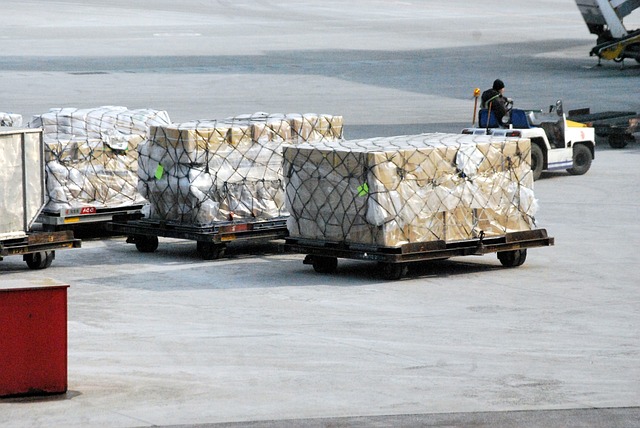Big moves: Air charter solutions for heavy and outsized cargo
Image by PublicDomainPictures from Pixabay
Outsized and heavy air cargo transport
Question: What weighs almost 640 metric tons and can fly? The answer, is the heavy cargo-carrying Antonov Airlines AC-225 ‘Mriya’, the world’s heaviest aircraft with a maximum take-off weight of 1,410,958lbs (639.99 metric tons). In the world of aviation that’s a pretty impressive statistic.
When it comes to moving heavy and outsize cargo around the world, not every aircraft type is up to the task. That’s when the heavy-hitters of the air cargo transport world are called into action. For heavy freight, too large to be handled by scheduled airlines or regular cargo-carrying aircraft, nose-loading freighters, rear-loading freighters, ramp-loading aircraft, and even aircraft with onboard cranes can be called into action.
Oversize cargo and other heavy shipments often need to travel over large distances which may include crossing international borders or traversing difficult terrain, including mountain ranges and other natural geographic obstacles. These barriers, both natural, geographic, and governmental often fully exclude the possibilities of using ground transport. Where ground transport is possible, the process may be further hindered by lengthy bureaucratic processes.
Whether the load is a massive power generator, rail wagons and carriages, aircraft parts including full aircraft bodies or wings, wind turbines, jet engine transportation, or oil and gas mining equipment, oversized cargo charter specialists know exactly what needs to be done.
For many major and large-scale engineering projects, the cost of transport to the final destination is usually part of the initial project management and planning strategy.
For super-sized cargo, it can be sometimes easier, and cheaper, to rely on air transport over the options available from its road or sea freight alternatives. Some cargo shipments may be too long or unusually configured for accommodation using standardized sea freight shipping containers, there may be a lack of appropriate shipping routes, or the cargo itself may be time-sensitive and needs to be transported faster, and more efficiently using aircraft transport.
For heavy shipments, roads – or rail – may not prove viable due to the logistics of road and line closures, the removal of permanent fixtures such as signs and overhead powerlines, bridges, and tunnels may not be passable, or other geographic features may act as impediments to the cargo reaching its final destination. With these concerns to be considered, oversized air freight transport using specialized aircraft may be the best, or only option available.

The largest loads ever moved by air
Some aircraft types may try to claim the honors for carrying large, oversized loads, but when it comes to breaking real records, the massive 6-engined Antonov AN-225 ‘Mriya’ (meaning ‘dream’ in the Ukrainian language) – the largest aircraft ever built, and a one-of-a-kind – has been recognized by the Guinness Book of Records as carrying the heaviest shipment ever.
On August 11th, 2009, the enormous Antonov Airlines 225’s sixteen pairs of wheels rolled onto the runway of Germany’s Frankfurt Hahn Airport and prepared for take-off. Stored inside the belly of the behemoth was a gigantic power plant generator weighing 187.6 tonnes (375,200 lb) on route to its final destination in Yerevan, Armenia.
Initially designed to transport the Soviet ‘space shuttle’, Buran, as piggyback cargo, the demise of the Buran project after the collapse of the Soviet Union left the Ukrainian aircraft company looking for new sources of revenue for the record-breaking super heavy freight carrier.
The Antonov-225 is not the only supersized cargo carrier transporting outsized cargo around the world. While not as iconic or emblematic as the Mirya, the list of giant aircraft stands as a testimony to the fact that extra-large cargo loads are still in hot demand.
Some of the largest include:
-
Antonov An-124 Condor – although temporarily grounded, the An-124 was one of the most commonly employed cargo freighters.
-
Antonov An-22 Antei – Initially introduced in 1967, this giant aircraft is still in operation across Russia.
-
Aero Spacelines Super Guppy – The oddly-shaped Super Guppy has most often employed by NASA carrying the now-redundant Space Shuttle and other rocket parts.
-
Airbus A300-600ST Beluga – Shaped like a large white dolphin, the Airbus Beluga is used primarily to transport Airbus parts – fuselages, wings, etc. – between Airbus production facilities.
-
Airbus A400M Atlas – The Airbus ‘Atlas’ is widely used across European countries. In 2019 it was deployed as a tanker to refuel aircraft German military aircraft.
-
Boeing 747 Dreamlifter – A variation of the much-loved Boeing 747, this supercargo carrier has been employed most recently carrying PPE and other medical equipment used in the fight against Covid-19.
The pros and cons of heavy air cargo
The use of large aircraft for hauling heavy and outsized cargo comes with both pros and cons. The distinct advantages of moving heavy cargo by air include:
-
Time – If time is a major factor in the moving of heavy equipment, air transport is the fastest way of moving oversized cargo, getting it where it needs to be on schedule.
-
Geography – Heavy air charter removes the problem of geographic barriers such as seas, mountains, and impassable hurdles.
-
Accessibility – Air transport can access areas inaccessible using other forms of transport.
-
Heavy cargo – Using large cargo aircraft allows sensitive and oversized cargo such as aircraft parts, heavy mining equipment, and power transformers to reach their destination with minimum handling.
However, using large cargo carriers also has its own set of disadvantages, a reliable air cargo charter company is best-placed to advise on the issues involved.
-
Expense – Air is the most expensive way of transporting heavy goods.
-
Hazards – Moving time-sensitive large air cargo consignments may be affected by weather conditions such as snow, ice, and fog. Other factors which may delay the movement of goods by air are natural phenomena like the volcanic disruption of air space, and man-made hindrances like industrial action, wars, and areas affected by political uncertainty.
-
Ground facilities – Extra large aircraft used for transporting oversized cargo bring their own set of restrictions such as runway lengths, airport altitude, noise regulations, and lack of appropriate ground-handling facilities or infrastructure.
Interesting facts about specialist air cargo management
Air cargo, whether you’re shipping heavy freight, like a space rocket component to NASA or just a time-sensitive parcel that needs to be in London by the start of business tomorrow, is a job best handled by specialist air charter companies.
Reputable air charter companies have highly experienced managers who know their business inside-out and can make the best recommendations to suit the client’s needs. They are familiar with unusual requests, they know the rules and regulations that must be followed, and they know how to follow them so that the client’s cargo arrives where it is supposed to when it is supposed to.
They know all there is to know about airline container leasing – those metal boxes or netting-wrapped pallets (which we rarely think about) you see being loaded into aircraft at every airport – without which, none of your cargo would be going anywhere.
They have to know how heavy is an airplane, what are its cargo dimensions, how long of a runway does it need, and the answers to a thousand other questions that most of us never even knew were questions.
They have to know the best and safest ways to transport a multitude of cargo like, heavy and outside loads, hazardous and sensitive materials, livestock such as racehorses, domestic animals, and wildlife.
They have to project manage and organize the delivery of humanitarian aid in crises right around the world. This can involve rapidly arranging urgent flights outside of normal working hours, to reach the scenes of hurricanes, earthquakes, tsunami, and human conflict. It can also involve establishing air bridges as strategic freight hubs, scheduling helicopters to reach remote drop-off locations in post-catastrophe terrain, and the air dropping of food and other aid items directly into famine-hit regions.
Cargo charter companies can also provide onboard couriers to transport time-sensitive cargoes as part of their luggage, ensuring that the cargo is delivered by hand and avoiding delays.
Whatever you need to move, wherever in the world, a professional air cargo charter company can remove the pain and bureaucracy of trying to juggle all of the elements personally. Their skilled teams of professionals have all of the experience and know-how needed to successfully negotiate any potential hurdles and ensure your cargo arrives safely and on time.

